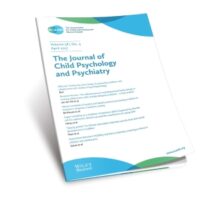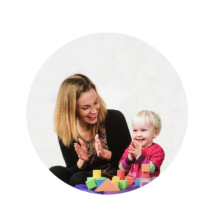Brain development and imaging
-

A network approach to the investigation of childhood irritability: probing frustration using social stimuli
Paper from the JCPP – ‘Currently, there is inconsistency in the identification of neural circuits that underlie irritability in children, especially in social contexts. This study aimed to address this gap by utilizing a functional magnetic resonance imaging (fMRI) paradigm to investigate pediatric anger/frustration using social stimuli.’ Khalil I. Thompson et al.
Read more -

DNA Methylation, Lateral Ventricular Volume, and Psychiatric Risk for Schizophrenia
In this Papers Podcast, Dr. Charlotte Cecil and Dr. Mannan Luo discusses their co-authored JCPP paper ‘DNA methylation at birth and lateral ventricular volume in childhood: a neuroimaging epigenetics study’.
Read more -

DNA methylation at birth and lateral ventricular volume in childhood: a neuroimaging epigenetics study
Open Access paper from the JCPP – ‘In this study, we conducted the first epigenome-wide association study of neonatal DNAm in cord blood with LVV in childhood (measured using T1-weighted brain scans at 10 years), based on data from a large population-based birth cohort, the Generation R Study (N = 840)’. Mannan Luo et al.
Read more -

Children with maltreatment exposure exhibit rumination-like spontaneous thought patterns: association with symptoms of depression, subcallosal cingulate cortex thickness, and cortisol levels
Open Access paper from the JCPP – ‘We studied the impact of maltreatment on self-generated thought (SGT) patterns and their association with depressive symptoms, subcallosal cingulate cortex (SCC) thickness, and cortisol levels in children.’ Ferdinand Hoffmann et al.
Read more -

Can we diagnose mental disorders in children? A large-scale assessment of machine learning on structural neuroimaging of 6916 children in the adolescent brain cognitive development study
Open Access paper from JCPP Advances – ‘Prediction of mental disorders based on neuroimaging is an emerging area of research with promising first results in adults. However, research on the unique demographic of children is underrepresented and it is doubtful whether findings obtained on adults can be transferred to children’. Richard Gaus (pic), Sebastian Pölsterl et al.
Read more -

Can repeated intranasal oxytocin administration affect reduced neural sensitivity towards expressive faces in autism? A randomized controlled trial
Paper from the JCPP – ‘Autism spectrum disorder (ASD) is a neurodevelopmental condition characterized by difficulties in social communication and interaction. Crucial for efficient social interaction is the ability to quickly and accurately extract information from a person’s face.’ Matthijs Moerkerke (pic) et al.
Read more -

Trajectories of cortical structures associated with stress across adolescence: a bivariate latent change score approach
Open Access paper from the JCPP – ‘Here, we used a subset of the IMAGEN population cohort sample to understand longitudinally the long-term interrelations between stress, cortical development, and cognitive functioning.’ Tochukwu Nweze (pic) et al.
Read more -

Breastfeeding duration is associated with larger cortical gray matter volumes in children from the ABCD study
Paper from the JCPP – ‘Our main objective was to study the relationship between breastfeeding duration and cerebral gray matter volumes. We also explored the potential mediatory role of brain volumes on behavior.’ Christian Núñez et al.
Read more -

Neural correlates of face familiarity in institutionalised children and links to attachment disordered behaviour
Video abstract from Paula Oliveira on her JCPP paper ‘Neural correlates of face familiarity in institutionalised children and links to attachment disordered behaviour’.
Read more -

Editorial Perspective: Leaving the baby in the bathwater in neurodevelopmental research
Open Access paper from the JCPP – “We review three worked examples (of stress processing, early activity level in ADHD and social brain development in autism) to illustrate how these new approaches might lead to new conceptual and translatable insights into neurodevelopment”. Sam Wass and Emily J.H. Jones (pic)
Read more